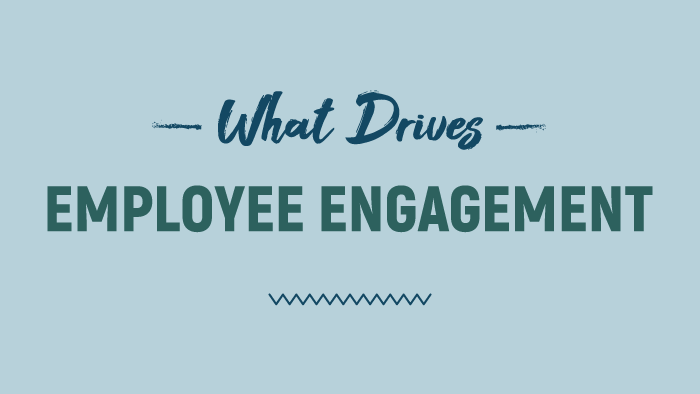By now we are all likely aware of the term quiet quitting. Popularized by social media platform TikTok, this term quickly became viral for essentially meaning employees not going above and beyond anymore. Since then, the term has been defined, redefined, stretched, and remolded into a multi-faceted term meaning anything from not stressing over work and setting boundaries to mentally checking out from work to not accepting additional work without additional pay.
Retaining Talented Employees
What quiet quitting comes down to is essentially employee disengagement. Workers are no longer fully engaged in their work. As a business, working on retaining talented employees is key to combatting quiet quitting.
Flexible Workforce
Flexibility at work was once an afterthought until 2020 when a global pandemic shifted the world dramatically, forcing many companies to adapt or go under. Business leaders quickly learned the value of employee wellbeing and mental health through adopting workforce flexibility.
This type of flexibility is defined as the way employees work that best suit their needs. This could include remote work, varying start and ending times, split shifts, hybrid shifts, etc.
Now that restrictions have eased, there are companies that are taking this benefit away to reform culture, use the office space already paid for, monitor productivity – the list goes on, but it’s important to look at the benefits workforce flexibility brought to work.
Having some flexibility is beneficial for engaging employees because it helps create a more motivated and productive working environment:
- The Remote Collaborative Worker Survey found that in 2022, 77% of those who worked off-site at least a few times per month reported greater productivity, 30% said they accomplished more in less time, and 24% said they accomplished more in the same amount of time. When employees feel trusted to manage their own time, they get work done and feel more empowered and motivated.
- This flexible model of work also opens the door to improved diversity. Rather than limiting your employee selection from your town or area, the organization can begin looking at a wider pool of candidates. This provides opportunities to find the best fit for each role.
Prioritizing Workload
There’s a fine line between micromanagement and letting employees have the space to do their work. However, managers still need to help employees prioritize their work. Simply having a weekly one-on-one meeting can help alleviate anxiety and burnout – big contributors to employees becoming disengaged.
Using a project management software can help keep priorities clear, but managers should use terminology aligned with importance such as critical, today, ASAP, moderate, low priority, etc.
It’s important to also train leaders on skills such as emotional intelligence, trust building, and communication. This allows for employees and managers to feel comfortable having conversations about setting boundaries. 55% percent of CEOs say that training managers is a key challenge for the coming years.
To help organizations develop effective leaders, BizLibrary has created BizAcademy, a cohort-learning platform led by industry experts to teach leaders the skills they need to succeed in their roles. Managers and leaders can learn side by side with others in similar roles to share ideas, join group discussions, develop feedback techniques, and more.
But there is an alternate way to look at prioritization from the eyes of the employee – and it looks a lot like quiet quitting. The trendy term can also be defined as employees prioritizing their needs over the needs of an organization. It’s an intentional act taken to reclaim their boundaries and decide what gets their effort, time, and energy.
Managing Employee Turnover Through DEI and Employee Wellness
Diversity, Equity, and Inclusion (DEI) initiatives are certainly one of the most important topics in today’s work landscape.
Business-wise DEI helps cultivate an inclusive culture, thus giving an organization a competitive edge. It also brings employees to the table that offer unique perspectives and life experiences. Remote work not only opens up the employee pool to a geographically global audience, but it allows those in communities who typically would have a more difficult time working in person (those with handicaps, family caregivers, parents) the opportunity to contribute to the working world.
Culturally, DEI creates a place where employees can feel safe being their authentic selves. When employees are able to be authentic, they are free to share creative ideas and solutions and move innovation forward.
Providing an open and inclusive workplace supports the betterment of employee well-being by lessening stress, anxiety, and uncertainty and encouraging work-life balance and acceptance of change. To encourage this, consider unconscious bias and microaggression trainings and consider mentorship opportunities.
Wellbeing affects employee engagement as engaged employees produce more work more efficiently, but if they are struggling outside of work, they are at risk of falling behind on tasks.
Strong employee health and wellbeing will also lead to higher morale overall – employees that have their needs met feel trusted, valued, and competent.
And it’s not just about the employees. There are many organizations out there that have found that when employees are treated well, that joy trickles down into creating a great customer experience for clients.
As for wellbeing, consider implementing flexible working hours, consider maintaining remote work capabilities (or even a hybrid options), celebrate employee successes in and out of the office, and looking for community involvement opportunities.
Upskilling, Reskilling, and Career Growth Plans
The University of Phoenix’s Annual Career Optimism Index 2022 found that 68% of workers say they would stay with their current employer indefinitely if the employer made an effort to upskill them. A lack of opportunities will leave employees wanting more and push them to become more disengaged
Career paths that align with both employee interests and business objectives are a great retention strategy and should be an active task for organizations. Personalized learning is the future. Whether you choose to upskill employees in their current roles or reskill them into new ones, it’s imperative that it align with their interests and career goals.
For maximum engagement, there needs to be a healthy balance of prescriptive and elective learning. While some work does need to be on the manager to prescribe training they think is important for their team, employees should have access to a large library of content so they have the freedom to search the content to create their own learning opportunities based on skills they’re interested in.
We’ve created a platform that makes upskilling and reskilling a breeze. Check out BizSkills, the first and only off-the-shelf upskilling platform that provides your workforce with personalized training and career growth for each unique employee. We’ve got 500+ pre-built job roles (descriptions, responsibilities, and skills included) mapped to 1500+ skills mapped to 5000+ lessons in our content library.
This helps take the grunt work out of skills mapping and allows for relevant training for each learner as they assess their capabilities and explore on their own. That being said, leaders can also assess their workers and assign courses they believe are relevant.
As you can see, quiet quitting has more to do with engagement than employees simply not wanting to work. Employees will withdraw if not offered growth opportunities and flexibilities. Organizations are learning that the answer to quiet quitting is to offer an inclusive culture, retraining opportunities, and help finding balance.
For more information on employee engagement techniques, check out our ebook on what drives employee engagement.

